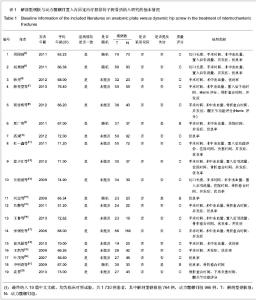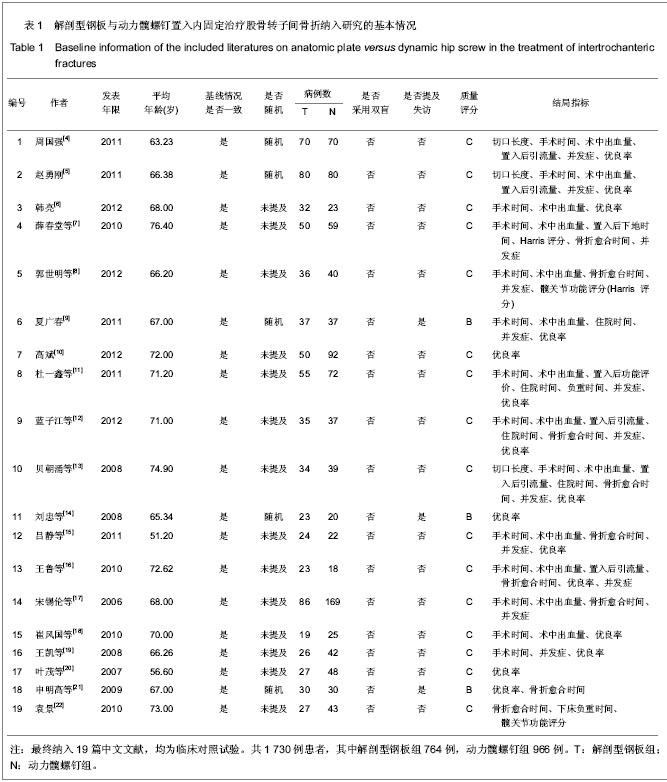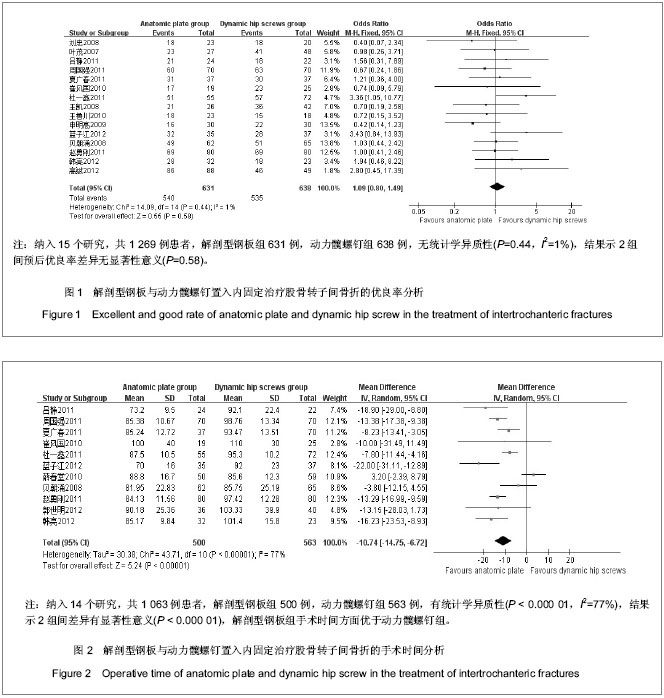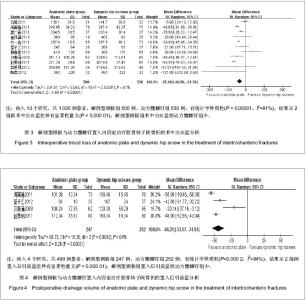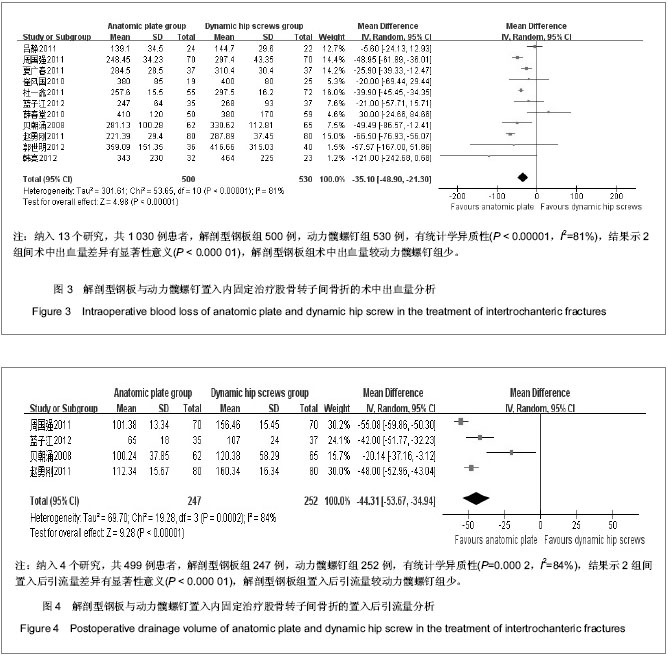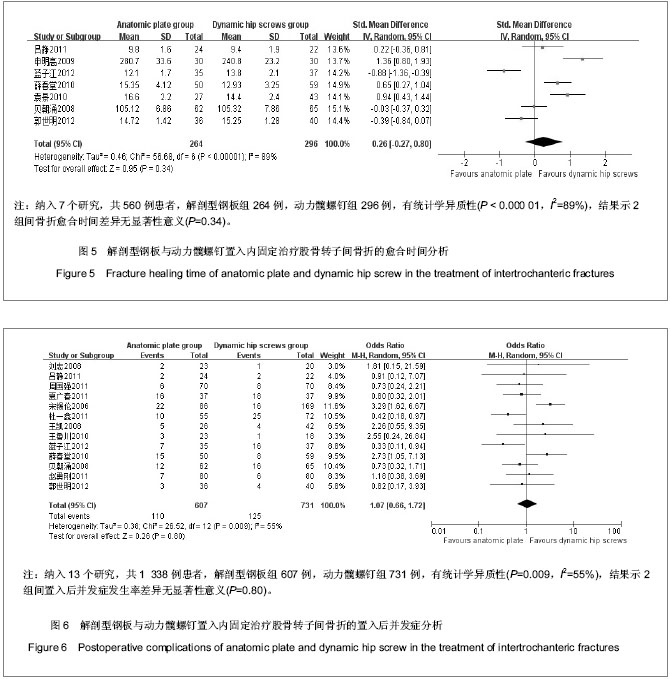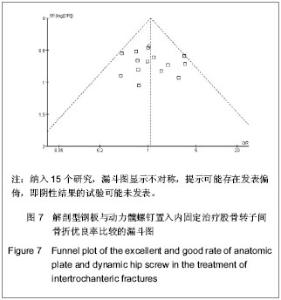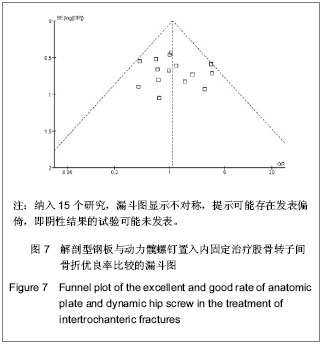| [1] Laohapoonrungsee A, Arpornchayanon O, Phornputkul C. Two-hole side-plate DHS in the treatment of intertrochanteric fracture: results and complications. Injury. 2005;36(11): 1355-1360.
[2] Bienkowski P, Reindl R, Berry GK, et al. A new intramedullary nail device for the treatment of intertrochanteric hip fractures: Perioperative experience. J Trauma. 2006;61(6):1458-1462.
[3] Fox KM, Magaziner J, Hawkes WG, et al. Loss of bone density and lean body mass after hip fracture. Osteoporos Int. 2000;11(1):31-35.
[4] 周国强. 解剖型钢板与动力髋螺钉治疗老年股骨粗隆间骨折的对比分析[J].临床和实验医学杂志,2011,16(10):1279-1280.
[5] 赵勇刚. 解剖型钢板与DHS治疗老年股骨粗隆间骨折的效果比较[J]. 中国医学创新,2011,23(8): 37-38.
[6] 韩亮. 三种固定方法治疗股骨粗隆间骨折98例分析比较[J].中国保健营养,2012,(11):395-396.
[7] 薛春堂,郝鸿伟,刘敬,等. 老年人股骨粗隆间骨折109例手术疗效分析[J]. 陕西医学杂志,2010, 39(7):844-845.
[8] 郭世明,丁真奇,洪加源,等.3种内固定方法治疗老年股骨粗隆间骨折的病例对照研究[J].中国骨伤,2012,25(6):474-477.
[9] 夏广春.老年股骨粗隆问骨折两种内固定方式疗效分析[J].中国当代医药,2011,18(15):152,155.
[10] 高斌. 老年股骨粗隆间骨折不同内固定治疗疗效观察[J].四川医学,2012,33(1):80-82.
[11] 杜一鑫,陈国富.解剖型钢板与动力髋螺钉治疗老年股骨粗隆问骨折的疗效对比[J].中国现代医生, 2011,49(7):84-85.
[12] 蓝子江,龚志峰,沈光程,等.解剖型钢板与动力髋螺钉治疗老年股骨粗隆间骨折的疗效比较[J].中国药物与临床,2012, 12(4): 480-481.
[13] 贝朝涌,林卓锋,杨志,等. 解剖型钢板与动力髋螺钉治疗老龄股骨粗隆间骨折的疗效比较[J].广西医科大学学报,2008,25(4): 575-577.
[14] 刘忠,张卫兵,柴林涛,等.股骨粗隆间骨折手术治疗86例临床分析[J].解剖与临床,2008,13(4): 300-301.
[15] 吕静,李玉龙,席剑,等.股骨粗隆间骨折钢板内固定的应用研究[J].中国医药指南,2011,9(31):6-8.
[16] 王鲁,李长德,臧志海,等.动力髋螺钉和解剖型钢板治疗股骨粗隆间骨折比较[J].中国老年学杂志,2010,30(21):3195-3196.
[17] 宋锡伦,唐广应,苏军,等.动力髋螺钉、解剖型钢板及中空螺钉治疗股骨粗隆间骨折的疗效分析[J].中国骨与关节损伤杂志,2006, 21(1):58-59.
[18] 崔风国,宋维,丛皎,等. 不同方法治疗老年性股骨粗隆间骨折的临床分析[J]. 国际外科学杂志,2010,37(6):372-374.
[19] 王凯,车彪,邹凯,等. DHS合并加压螺钉在股骨粗隆间骨折中应用的疗效分析[J].中国矫形外科杂志,2008,16(16): 1210-1211, 1220.
[20] 叶茂,李俊清,王建国,等. 股骨转子间骨折的手术治疗分析[J].中国骨伤,2007,20(3):170-172.
[21] 申明高,郑文哥,谢彪,等. 中老年股骨转子间骨折几种治疗方法疗效分析[J]. 医学信息,2009,1(5): 215.
[22] 袁景.不同方法治疗老年股骨转子间骨折的疗效分析[J].临床骨科杂志,2010,13(2):224-225.
[23] Takigami I, Matsumoto K, Ohara A,et al. Treatment of trochanteric fractures with the PFNA (proximal femoral nail antirotation) nail system - report of early results. Bull NYU Hosp Jt Dis. 2008;66(4):276-279.
[24] Alobaid A, Harvey EJ, Elder GM,et al. Minimally invasive dynamic hip screw: prospective randomized trial of two techniques of insertion of a standard dynamic fixation device. J Orthop Trauma. 2004;18(4):207-212. |
